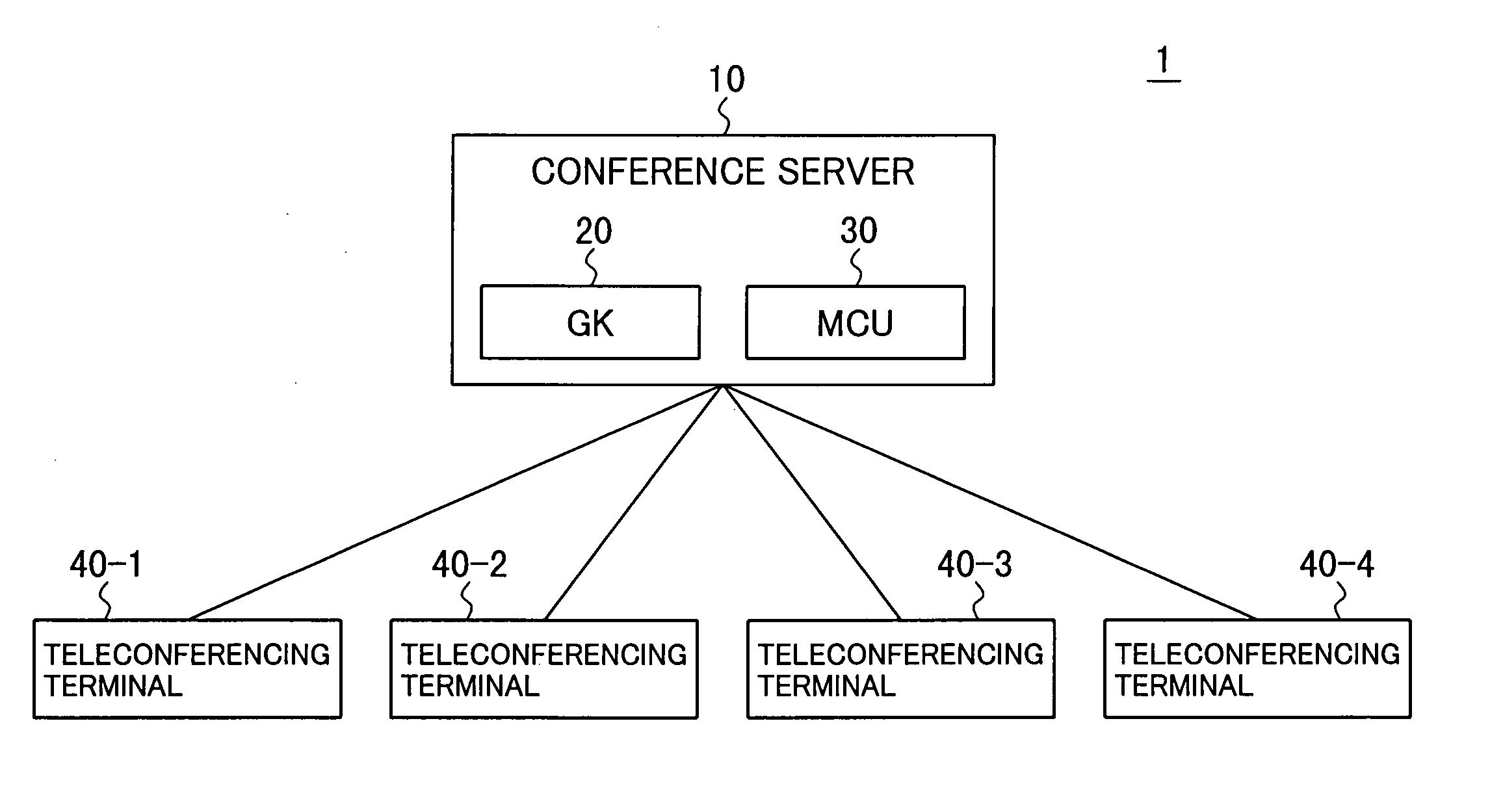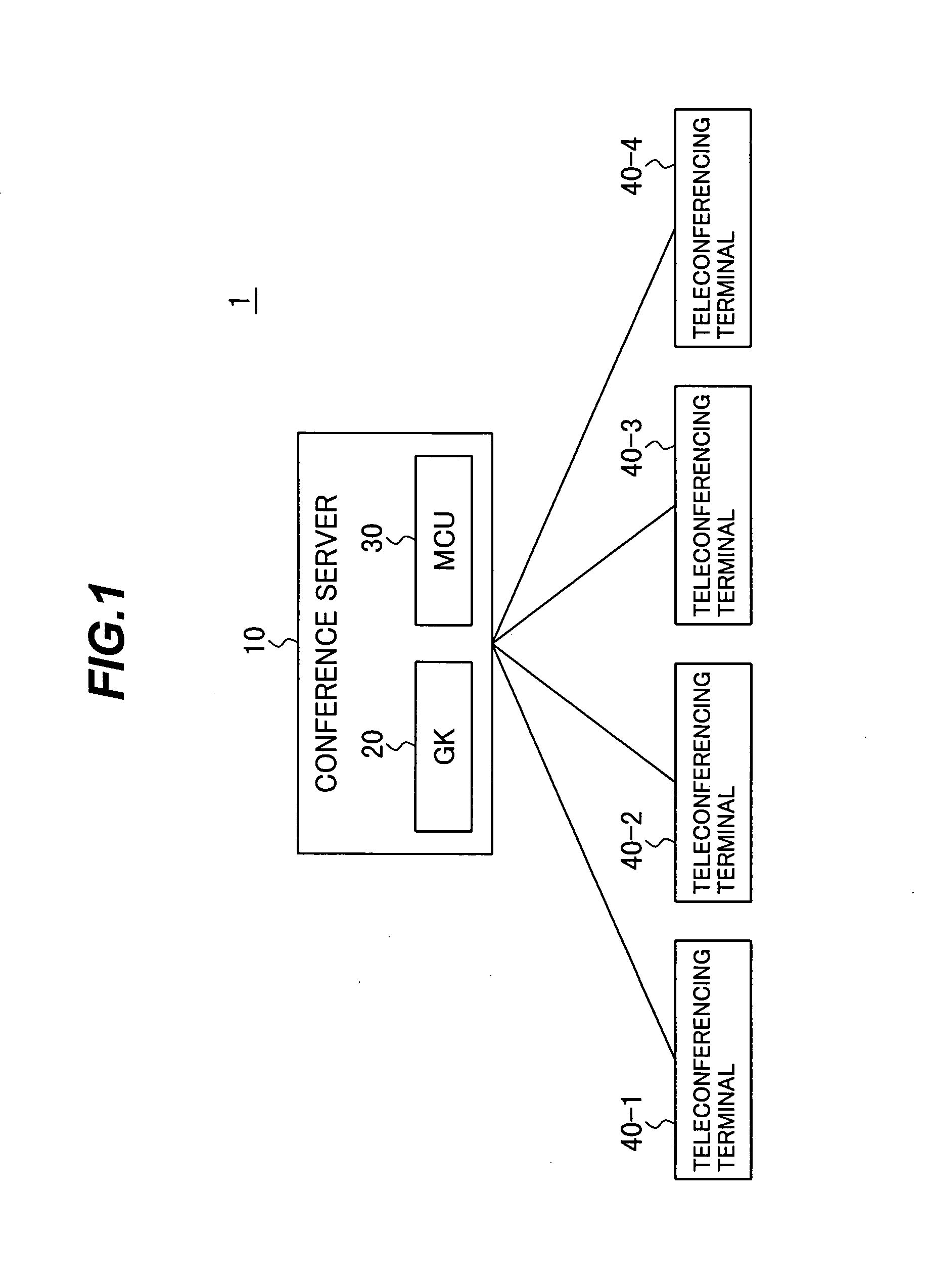Data processing apparatus and method, and network system
a data processing and network system technology, applied in the field of data processing apparatus and methods and network systems, can solve the problems of terminal users being forced to accept low-quality images, affecting the quality of terminal images, and a momentary jump in the amount of data traffic the network must carry. to achieve the effect of improving quality
- Summary
- Abstract
- Description
- Claims
- Application Information
AI Technical Summary
Benefits of technology
Problems solved by technology
Method used
Image
Examples
Embodiment Construction
[0037]An embodiment of the invention will now be described with reference to the attached drawings, in which like elements are indicated by like reference characters. The embodiment is a network system, more specifically a video teleconferencing system, including the novel data processing apparatus.
[0038]Referring to FIG. 1, the video teleconferencing system 1 has a conference server 10 including a gatekeeper (GK) 20 and a multipoint control unit (MCU) 30. The conference server 10 is connected through a network to four teleconferencing terminals 40-1 to 40-4, which are engaged in a video teleconference.
[0039]The gatekeeper 20 gives the teleconferencing terminals 40-1 to 40-4 permission to connect to the conference server 10, and performs functions such as address conversion. The MCU 30 transmits and receives data, including voice data and video data, to and from the teleconferencing terminals 40-1 to 40-4. The conference server 10 provides one or more virtual conference rooms for th...
PUM
 Login to View More
Login to View More Abstract
Description
Claims
Application Information
 Login to View More
Login to View More - R&D
- Intellectual Property
- Life Sciences
- Materials
- Tech Scout
- Unparalleled Data Quality
- Higher Quality Content
- 60% Fewer Hallucinations
Browse by: Latest US Patents, China's latest patents, Technical Efficacy Thesaurus, Application Domain, Technology Topic, Popular Technical Reports.
© 2025 PatSnap. All rights reserved.Legal|Privacy policy|Modern Slavery Act Transparency Statement|Sitemap|About US| Contact US: help@patsnap.com



